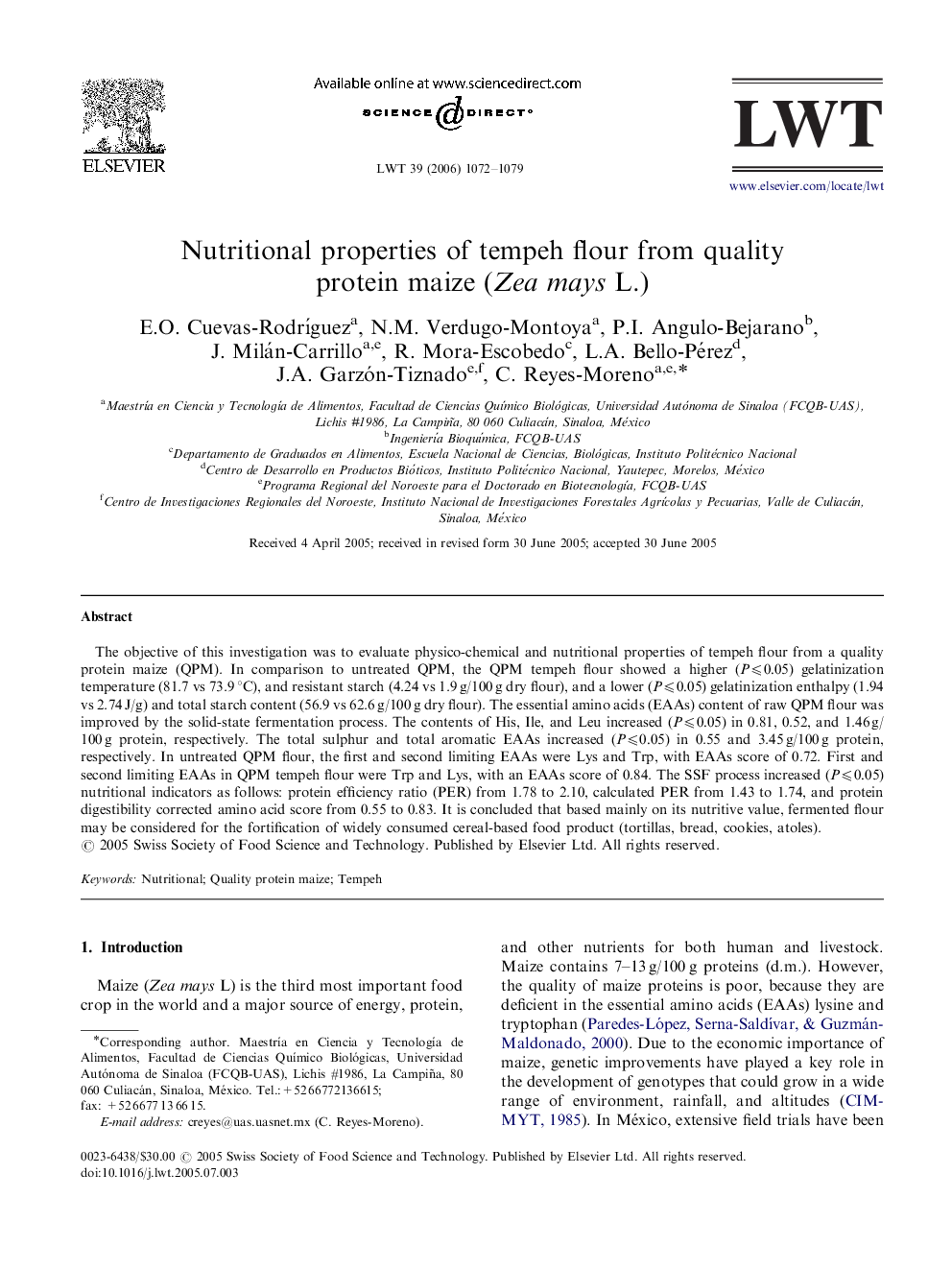| Article ID | Journal | Published Year | Pages | File Type |
|---|---|---|---|---|
| 4565420 | LWT - Food Science and Technology | 2006 | 8 Pages |
The objective of this investigation was to evaluate physico-chemical and nutritional properties of tempeh flour from a quality protein maize (QPM). In comparison to untreated QPM, the QPM tempeh flour showed a higher (P⩽0.05P⩽0.05) gelatinization temperature (81.7 vs 73.9 °C), and resistant starch (4.24 vs 1.9 g/100 g dry flour), and a lower (P⩽0.05P⩽0.05) gelatinization enthalpy (1.94 vs 2.74 J/g) and total starch content (56.9 vs 62.6 g/100 g dry flour). The essential amino acids (EAAs) content of raw QPM flour was improved by the solid-state fermentation process. The contents of His, Ile, and Leu increased (P⩽0.05P⩽0.05) in 0.81, 0.52, and 1.46 g/100 g protein, respectively. The total sulphur and total aromatic EAAs increased (P⩽0.05P⩽0.05) in 0.55 and 3.45 g/100 g protein, respectively. In untreated QPM flour, the first and second limiting EAAs were Lys and Trp, with EAAs score of 0.72. First and second limiting EAAs in QPM tempeh flour were Trp and Lys, with an EAAs score of 0.84. The SSF process increased (P⩽0.05P⩽0.05) nutritional indicators as follows: protein efficiency ratio (PER) from 1.78 to 2.10, calculated PER from 1.43 to 1.74, and protein digestibility corrected amino acid score from 0.55 to 0.83. It is concluded that based mainly on its nutritive value, fermented flour may be considered for the fortification of widely consumed cereal-based food product (tortillas, bread, cookies, atoles).
